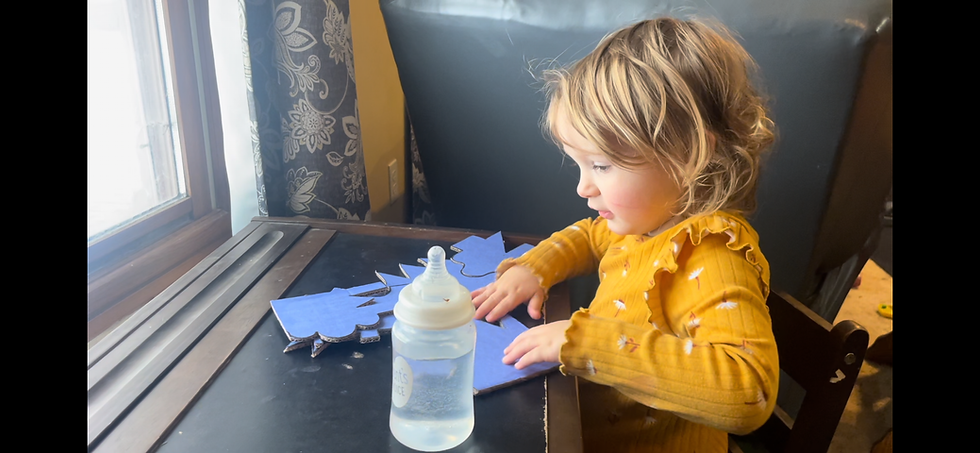The Power of Puzzles: Transforming Learning for Kids Aged 3-5
- Kevin C. Huels
- Jan 7
- 3 min read
Updated: Jan 10

In the journey of early childhood education, puzzles emerge as one of the most impactful tools for cognitive and emotional development. Whether you’re homeschooling, supplementing your child’s at-home activities, or simply looking for budget-friendly ways to foster growth, puzzles are a win-win solution for parents of Arc Level 1 (AL1, for kids aged 3-5) learners. These seemingly simple activities can provide endless opportunities for learning, engagement, and bonding with your child.
The Benefits of Puzzles for Young Learners
1. Enhancing Problem-Solving Skills
Puzzles encourage children to think critically about how pieces fit together. This process strengthens problem-solving abilities, spatial reasoning, and patience. According to research published in the Early Childhood Research Quarterly, solving puzzles supports cognitive development and enhances executive functioning skills, such as memory and attention control.
2. Boosting Fine Motor Skills
Handling puzzle pieces improves hand-eye coordination and dexterity. Picking up, rotating, and fitting pieces into place engages the small muscles in children’s hands, helping them build the coordination needed for writing and other essential activities later on.
3. Building Confidence and Resilience
Each time your child completes a puzzle, they experience a sense of accomplishment. This positive reinforcement builds confidence and resilience, teaching them that persistence pays off.
4. Promoting Focus and Attention
Working on a puzzle requires focus. For young learners, puzzles can serve as a fun way to develop attention span and the ability to concentrate on a single task, both critical skills for academic success.
Homemade Puzzles: A Budget-Friendly Alternative

For families on a budget, puzzles don’t need to be store-bought to be effective. In fact, making your own puzzles can add a layer of creativity and personal connection to the activity.
My wife, Lisa, recently crafted a set of puzzles (see above) for our 3-year-old using colored construction paper, cardboard, an Exacto knife, and glue. Not only did our child love them, but the process of creating them also became a family bonding activity.
How to Make Your Own Puzzles
Materials Needed:
Colored construction paper
Sturdy cardboard (from cereal boxes or delivery packaging)
Glue stick
Exacto knife or scissors
Steps:
Draw or print simple shapes or images on the construction paper.
Glue the paper to a piece of cardboard for durability.
Cut the cardboard into puzzle pieces using an Exacto knife or scissors. For younger children, keep the pieces large and simple.
Optional: Add numbers, letters, or patterns to the pieces to incorporate learning elements like math or literacy.
Cost Savings Tip: Repurpose materials you already have at home. Cardboard from packaging and leftover craft supplies are perfect for DIY puzzles, making this an affordable and sustainable activity.
Incorporating Puzzles into Your Daily Routine
Morning Warm-Up: Start the day with a short puzzle activity to engage your child’s mind.
Story Integration: Create puzzles that reflect characters or scenes from your child’s favorite books to combine storytelling with play.
Collaborative Play: Work on puzzles together to encourage teamwork and communication.
Outdoor Puzzle Time: Take puzzles outside on nice days to combine fresh air with learning.
Anytime Activity: When your toddler is "bored", having a few puzzles on hand gives them something to do and adds more variety to their day.
Why Puzzles Fit into the Arc Framework
In ThoughtNet's Arc Framework, we emphasize learning tools that inspire curiosity, exploration, and critical thinking. Puzzles align perfectly with this methodology by fostering self-directed problem-solving and creativity. They serve as an ideal activity for AL1 learners, helping build foundational skills in an interactive and enjoyable way.
Piecing It Together
Puzzles are more than just pieces to fit together; they’re opportunities to foster growth, resilience, and a love of learning. Whether store-bought or homemade, they’re an accessible and effective way to support your child’s development. So grab some materials, get creative, and watch your little one thrive as they tackle each new challenge.
Sources:
Five Things Children Gain from Puzzle Play (Illinois Learning Project)
Early Puzzle Play: A predictor of preschoolers’ spatial transformation skill (NIH)
What jigsaw puzzles tell us about child development (ScienceDaily)
Importance Of Puzzles In Early Childhood (Aussie Childcare Network)





Comments